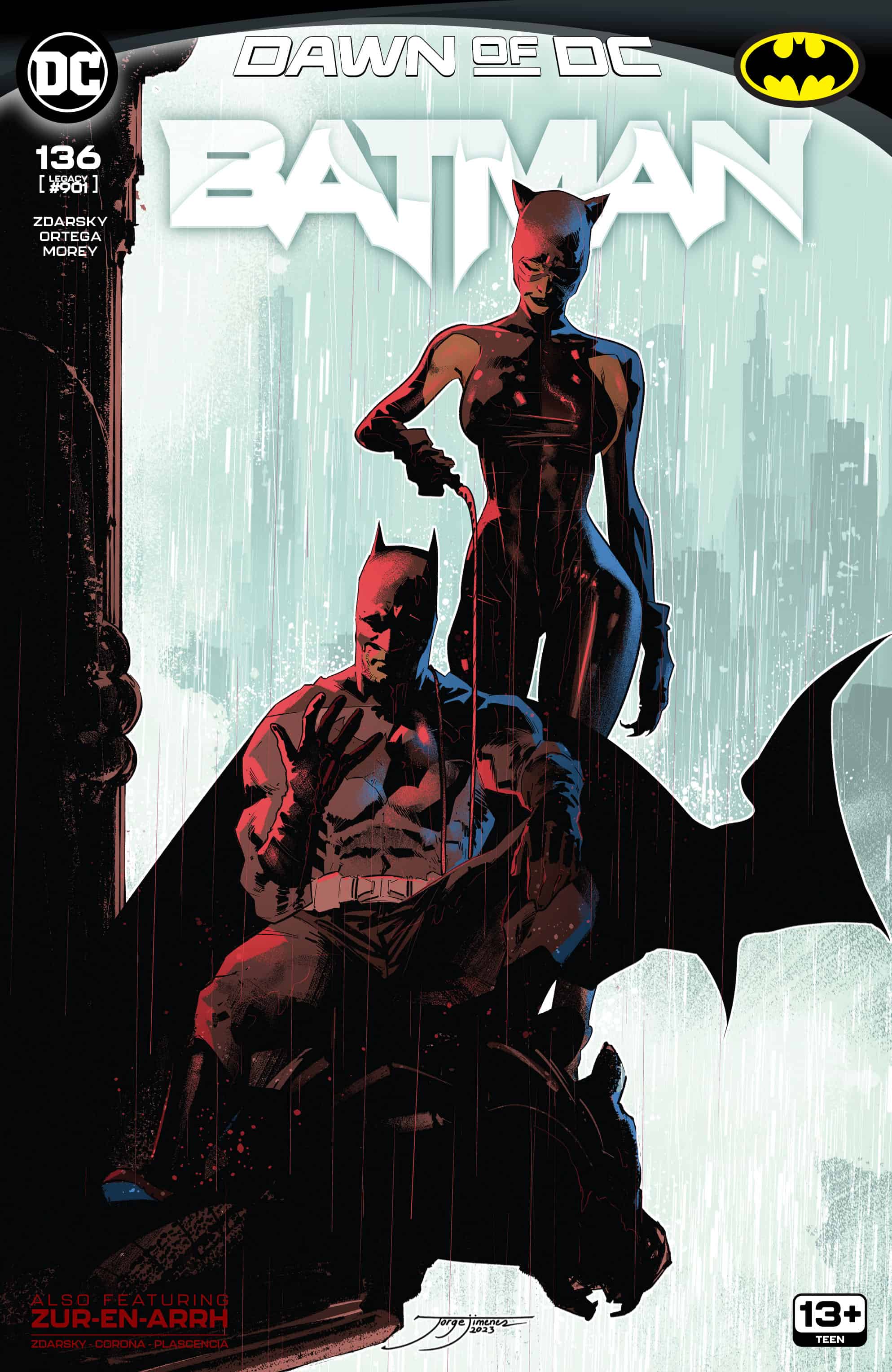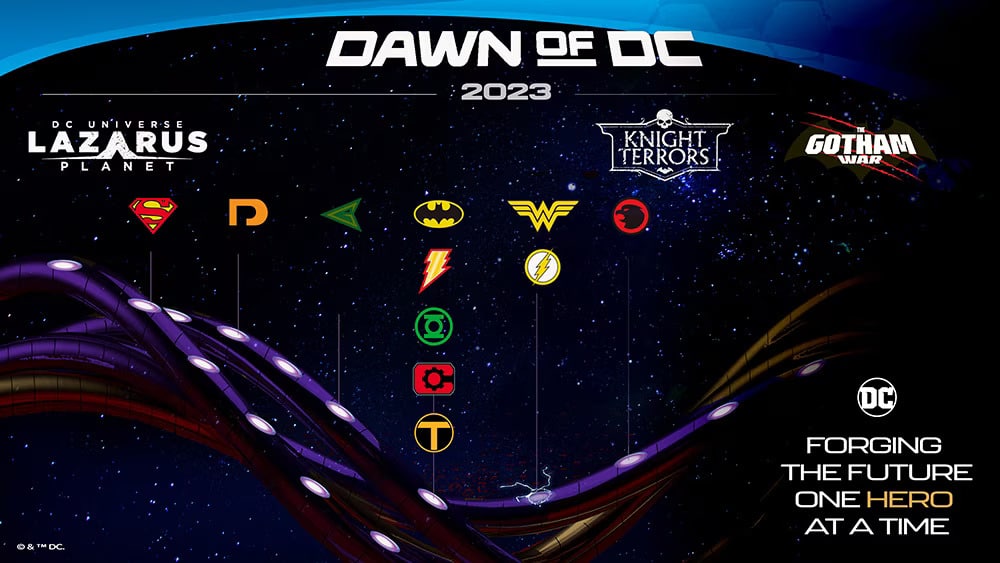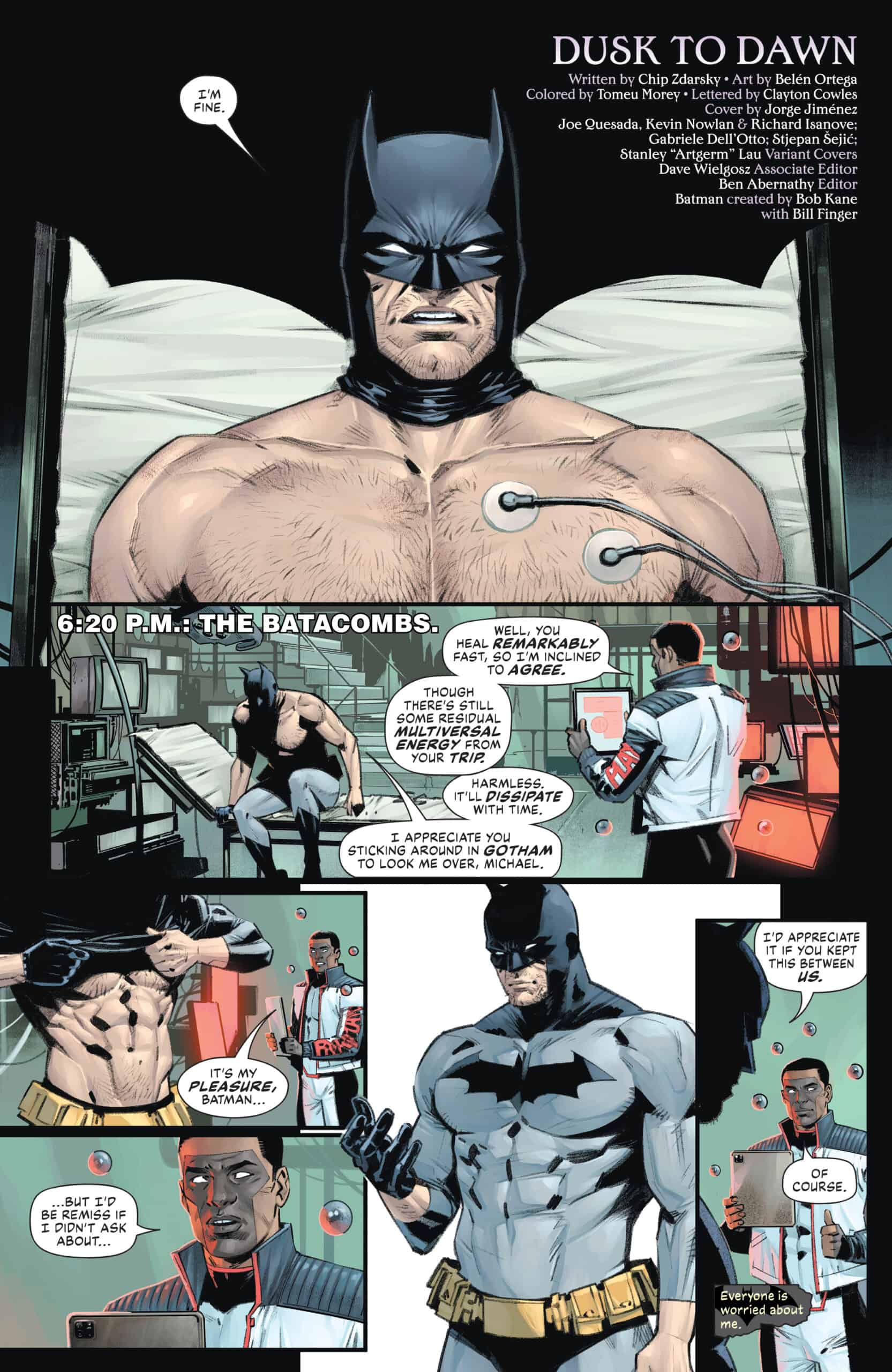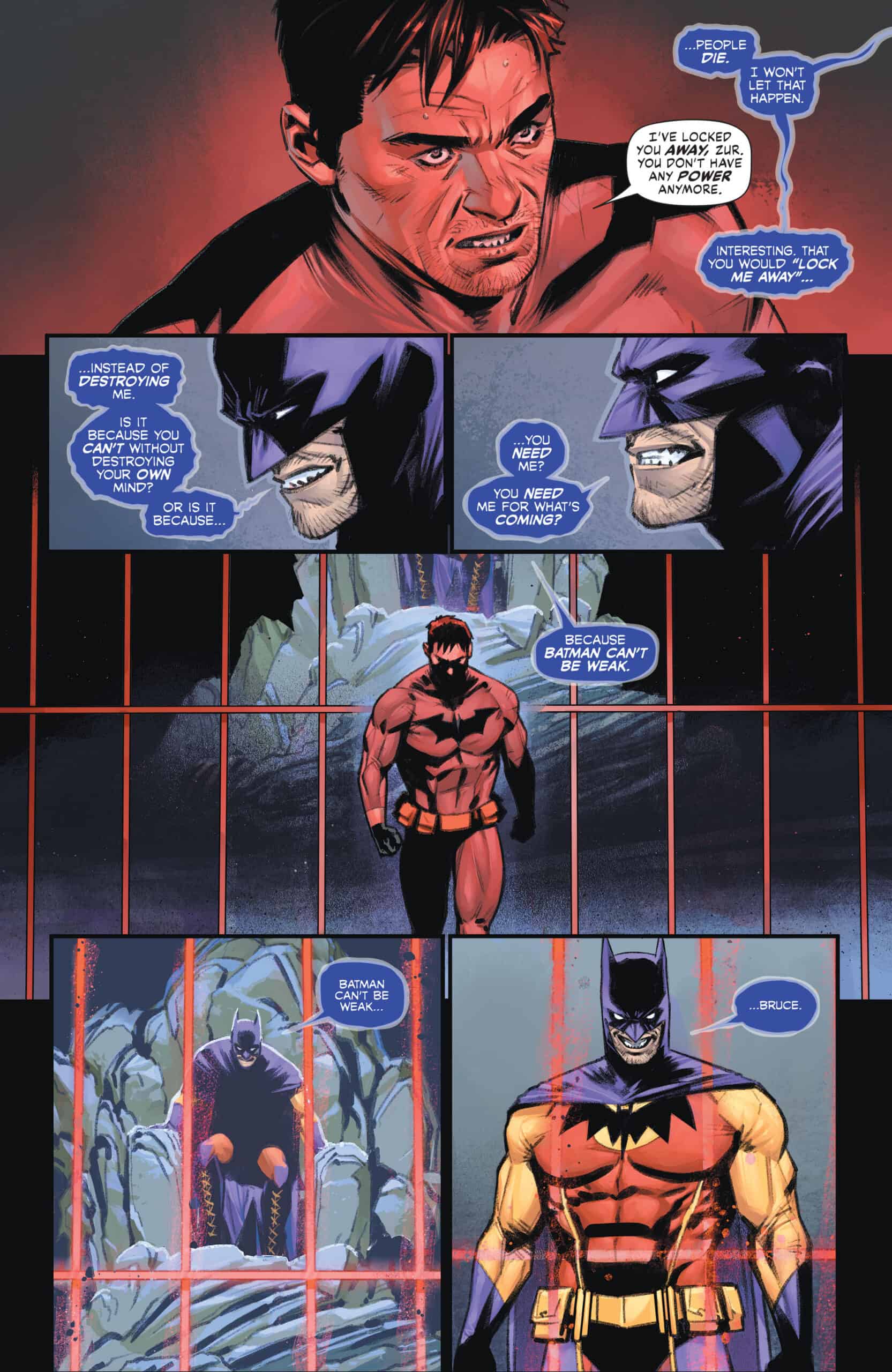Batman #136

Recap
Failsafe and Red Mask have forever changed Batman, and Gotham isn’t as welcoming as it once was. Can Batman remind them who he is? Can he remind…Catwoman? The future of the Bat-books starts here, and everyone’s world is about to explode!
Review
As Spider-Man: Across the Spider-Verse swung into theaters and probably occupies the minds of comic fans by and large, one of the most thought-consuming elements is the blend of stunning visuals and characterization. It might be hyperbole to say at this point, but the film feels like a new north star for comic book movies and multiverse stories, alongside comic books as well. With that thought on the brain, it seems like the most recent issue of Batman is tapping into that energy thanks to a focus back on the character and matching visuals.
Batman #136 – written by Chip Zdarsky with art from Belén Ortega, colors by Tomeu Morey, and lettering from Clayton Cowles – is focused on the fallout of the first two arcs of this run, as Batman returns to Gotham and reestablishes himself. After losing his hand battling a new series of Jokers across the multiverse and psychological warfare with Zur-En-Arrh, Bruce is filled with doubts and fear about his effectiveness as a vigilante.
As Batman makes his presence known across the city, attacking the scions of the Penguin that moved in during the first back-up of the run, and then confronting an on the lam Selina Kyle, it becomes clear he’s still rattled by recent experiences. After confronting Selina and talking past her, Bruce is tricked into a family dinner with the extended Batfamily and watches as they burn in his mind. Zur-En-Arrh’s words echo as ruin approaches the family, and by extension a Gotham that’s been compromised.
Zdarsky’s script does an excellent job threading various elements from across his first two arcs, and their accompanying backup stories. Between the Penguin children taking over their father’s empire, the doubts introduced by Failsafe and Zur-En-Arrh, and the tension between Batman and Catwoman across universes, it feels like everything is clicking into place for the upcoming story. The issue is split between table setting the recently announced Gotham War story and the upcoming Penguin series while digging into Bruce’s psyche after experiencing the hectic events of the last ten issues.

Ortega was an excellent choice to bring in for this story, as her art bridges the back-ups that established the Penguin plotline and the Catwoman elements. Ortega illustrated a few issues of the currently running Catwoman title, and bringing her for this installment establishes a unifying visual continuity. Along with that sense of progression, Ortega’s art also brings an introspective, emotionally charged atmosphere that helps to contrast with the over-the-top, supercharged kinetic energy of Jorge Jiménez. That focus on character is evident from the first panel that showcases an exposed Batman lying about being fine.

Ortega gives each member of the Batfamily a unique look that feels in line with their current depictions. They each get a moment of concern or personable touch that showcases the emotional range of Ortega’s line art. Even Jason Todd, the outlier of the group, softens a bit in the dinner sequence while under Ortega’s pencils. Ortega’s layouts and panel work always center on expressions and emotion, never losing focus of the character, whether it be in a group scene or a fight sequence. It’s an excellent recentering of the person under the cowls and always draws the eye.
That focus on emotion and character work is never more evident than in the scene between Bruce and Selina. While Ortega illustrates a great action sequence between Bruce and the Penguin children, the Bruce/Selina moment is the most enthralling element of this issue. Zdarsky and Ortega give a complex, rich tit-for-tat that contextualizes both characters’ recent arcs as they talk past one another. It’s clear that the two are at different stages of their lives, and even though they want to be together, the gap between them has widened.
It’s refreshing for the creative team to recalibrate the tension of the book to Bruce’s internal conflict and the more grounded elements of the relationship with Selina. After futuristic robots and multiversal adventures, grounding the story in these more relatable elements, along with Ortega’s character-centric linework, helps to return the atmosphere of the book to its street-ish level status. The big swings of Zdarsky’s first two arcs were a mixed result, and historically, his work succeeds with a character-first approach.

Alongside Ortega’s art, Morey’s colors help to infuse that character-driven approach into the look of the issue. The palette plays up harsher colors, utilizing strong blacks in places but not letting the noir elements of Gotham overtake the story. This version of Gotham has a vibrant The strongest use of colors is in the mental sequence, with the harsh reds casting over Bruce as he converses with Zur-En-Arrh. Those hues give an otherworldly look to the moment and help to fuel the nightmares and paranoia that seem to be infecting Bruce. That red also invokes the red from Failsafe’s design and echoes in the issue’s backup story.
The backup, also written by Zdarsky with art from Jorge Corona, colors by Ivan Plascencia, and letters from Cowles, tells a story about Zur-En-Arrh developing Failsafe. The two fight as the vigilante runs tests in the robot’s programming, in a sequence that feels like the John Wick equivalent of the Voight-Kampff test. The fight ends with a move shown in the opening of this run and makes clear Failsafe’s ability to adapt. The story ends with Failsafe questioning what comes after defeating Batman, foreshadowing its return later down the line.
Corona’s art brings a bit more of the hyperkinetic work that feels closer to Jiménez’s work, which makes sense based on the subject matter. The action moves and the elasticity in anatomy also do a great job setting this apart from the Batman action in the main story, which plays up the difference in these two versions of the moniker. Plascencia’s colors build on that experience by utilizing colors that feel more in line with a sci-fi book instead of a gritty noir tale. The pinkish-purple backgrounds and splatter dots remove this from a grounded reality and recalibrate the expectations as the Zur-En-Arrh personality comes out and then recedes.
Final Thoughts
Batman #136 is an excellent recalibration of expectations for the current run, building off the high-concept adventures to dig into introspective reflection and character-driven tensions. Zdarsky’s script returns inward as Bruce tries to reestablish his place in Gotham, and fails to reintegrate with the Batfamily. Paired with Ortega’s art, which not only thrives with the emotional focus but also helps to bridge the backup stories and ongoing plotlines from Catwoman, the issue is a tour-de-force of character work blending with spectacle. As the book is preparing to take a break for Knight Terrors, this issue offers an opportunity to peek into the upcoming story while contextualizing in-universes all of the high-octane action.
Batman #136: Return of the Bat
- Writing - 9/109/10
- Storyline - 9/109/10
- Art - 10/1010/10
- Color - 10/1010/10
- Cover Art - 10/1010/10





